Liberty and Mangum Warehouses, looking east from ~Gregson St., 1948.
(Courtesy The Herald-Sun Newspaper)
The No. 3 Liberty Warehouse was built around 1940, just to the north of the Mangum Warehouses and extending from Rigsbee Ave. to Foster St. along West Corporation St. The last of the large tobacco auction warehouses built in the Durham warehouse district, the Liberty was evidently well known as the venue where auctioneer 'Speed' Riggs plied his trade.
Tobacco Warehouses in the warehouse district, 1959.
(Courtesy Durham County Library / North Carolina Collection)
Planting tobacco in front of the Liberty Warehouse, looking north, 07.04.64
(Courtesy The Herald-Sun Newspaper)
Liberty Warehouse (with Mangum WH in the background) - mid to late 1960s.
The Liberty was still holding tobacco auctions up until 1984, but even after that point, the Liberty Cafe (which had moved north with the warehouse ~1940) was still serving up guaranteed artery-clogging fare for many years afterward.
Liberty Warehouse, looking northwest from Rigsbee Ave., 1987.
(Courtesy Durham County Library / North Carolina Collection)
(Photo by George Pyne, courtesy Milo Pyne)
The Liberty was purchased by Greenfire Development in October 2006.
Looking southwest, 06.07.08
It's a bit of a curious acquisition, although I've never quite understood Greenfire's acquisition strategy. Although they've hosted arts-related programming in the space, I think such a large parcel of DDO-1 land underneath the warehouse is rather concerning to me, vis a vis the future of the Liberty. As Durham's last surviving tobacco auction warehouse, I hope that it has a long future ahead of it.
Update: In 2010, Greenfire recieved local landmark designation for the property.
Update: In April of 2011, the city began to take action out of concern for the stability of the structure's roof; per the Herald-Sun, years of persistent leaks had resulted in rotting of the structural supports below. The structure had received a "Condemned" sign courtesy of NIS and a meeting was to have occurred on May 4, 2011 between Greenfire and the city to resolve what was to be done to repair the roof.
On 05.14.11, a large section of the warehouse roof collapsed in a brief but violent thunderstorm.
(WTVD)
Fortunately, no one was hurt, but businesses were flooded, and of course it is a terrible thing to happen to Durham's last tobacco auction warehouse - for which Greenfire sought and received local landmark designation last year. Commercial spaces on the south side of the warehouse, mostly artists and The Scrap Exchange were flooded. The city condemned the entire property and barred entry except for brief periods to remove items, and by the weekend of 5.21.11, there was a frantic push by tenants on the south side of the building to remove their belongings.
Portion of the collapsed roof, 05.21.11
Same area from Foster St., 05.21.11
Greenfire has sounded positive in public statements regarding their intention to repair the warehouse after meetings with their insurer and the city. It would, of course, be terribly tragic to lose Durham's last standing tobacco auction warehouse.
Update - 09.12.12
Greenfire has announced that they will demolish the southern 1/3-1/2 of the warehouse (the portion closest to Durham Central Park) in order to build a new podium-style apartment building. With some circumspection, I can't say I'm terribly broken up by this result, although I'd rather see this along the Foster Street side than the park side. I'm not sure how one doesn't affect the Rigsbee facade with the below rendering.
With the persistently poor economy beating the crap out the rents that office and retail tenants will pay for space, coming up with a way to redevelop the majority of this building - which is, architecturally, essentially a glorified windowless shed with some great interior materials and amazing history - is very challenging. How it got here is essentially irrelevant at this point - the intersection of the economy, its deteriorating condition, and limited flexibility of most of the architecture for adaptive reuse with historic tax credits mean that this is the only probable, viable path forward at this point. (I don't think Target is going to move here.)
(Greenfire Development / News and Observer)
Below in italics from the Durham Herald-Sun: The Herald-Sun - Greenfire unveils plans for Liberty Warehouse
By Cliff Bellamy
DURHAM – Greenfire Development has unveiled a plan to save part of historic Liberty Warehouse and demolish a currently condemned portion for apartments, office and retail. The redevelopment plan comes more than a year after part of the roof collapsed on the southern end of the warehouse, displacing a number of tenants.
Greenfire plans to build four floors of residential units atop a parking garage on the southern portion of the building, according to a press release from Paul Smith, managing partner for Greenfire Development. When completed, the southern portion of the warehouse would have 160 residential units, along with retail space. The warehouse is bounded by Foster Street, Corporation Street and Rigsbee Avenue.
The northern part of the warehouse would be renovated for commercial use, and Greenfire would try to attract retail tenants that would fit in with Durham Central Park’s emerging food and entertainment venues. Some tenants already are using the space as storage.
The redevelopment for the southern part of the warehouse calls for preserving historically significant elements on Rigsbee, along with the city-owned southern wall that faces part of Central Park. A drawing Greenfire submitted shows the Liberty Arts foundry that sits next to that wall intact. (The city also owns the foundry.) “The remainder of the existing distressed southern warehouse building will be demolished only when financing for the project is in place,” the release states. The developers will use as much original material as possible in the redevelopment.
In February, the Durham City-County Planning Department declared the southern part of the warehouse, where part of the roof collapsed in May 2011, in a state of demolition by neglect. The demolition-by-neglect order did not apply to the northern warehouse.
The Planning Department gave Greenfire an Oct. 15 deadline to complete numerous repairs to the southern part of the warehouse. In an email message Tuesday, Smith stated that the Planning Department has agreed to stay enforcement of the order while it works through “the de-designation process.”
Smith was referring to the building’s current designation as a local historic landmark. Greenfire has applied to take away that designation, and is applying for a certificate of appropriateness from the Historic Preservation Commission. Under local landmark designation, state law allows local government to delay a request for demolition for up to a year.
Earlier this year, Durham’s Historic Preservation Commission applied to the state Department of Cultural Resources to have Liberty Warehouse designated as a structure of statewide historical significance. The state denied that application, which would have given local government the authority to deny outright demolition of the warehouse.
It appears that local preservationists, who have been meeting with Smith, support the proposal. “While we would like to see the entire building preserved, we understand the economic reality of making a project of this scale work and generally support the plan that Paul has shared with us,” stated Josh Parker, board chairman of Preservation Durham, in the release.
Greenfire has also met with members of Durham Central Park as well as Preservation Durham on the proposal.
City planning officials also could not be reached for comment before deadline on what impact Greenfire’s new plans might have on the demolition-by-neglect proceedings and deadline.
Greenfire must receive building permit approval before the work on the demolition-by-neglect order can begin. As of Tuesday, the permits had not been issued.
The roof collapse forced several tenants, including Liberty Arts, to relocate. Cassandra Gooding, president of Liberty Arts, said her organization had not seen the new plans for redevelopment and had no comment. Liberty Arts continues to use the foundry, although its offices have been relocated to the Cordoba Building on Franklin Street in Durham.
The community will have a chance to comment on the plans during the formal design process, Smith stated. The pre-development phase will take from 12 to 18 months before any ground is broken, the release stated.
---------------
Update May 2013.
The city council is seeking to remove the landmark designation from the property, as it is cited as an "impediment" to redevelopment of the property. The latest suitor is Roger Perry of "East-West Partners" - developer of the Meadowmont ~new urbanist subdivision on Highway 54 outside of Chapel Hill. The proposal involves demolition of the entire structure save the Rigsbee facade and the brick southern wall that faces on Central Park. Not very creative, to say the least, and an unfortunate - but somehow fitting end to the history of tobacco auctions in Durham - which seems perpetually determined to erase its history and culture and to be forever new.
An anonymous user sent me some wonderful interior photos of the Liberty that show just how well preserved much of the original structure is. All photos ~February 2013.
East-West partners released their rendering of their proposed development on 1/23/14
From the Herald Sun on 1.23.14
A Chapel Hill development firm will hear feedback Thursday on a proposal to demolish most of the Liberty Warehouse, the former tobacco auction warehouse buildings located between Rigsbee Avenue and Foster Street, to build a mixed-use project with apartments and shops.
East West Partners has proposed a development that would include 246 apartments, ground-floor retail shops, a parking deck, and several interior courtyards, according to plans filed with Durham City-County Planning. The developer wants to incorporate an existing wall that now stands along the Durham Central Park side into the project, as well as existing signs and recycled building materials.
“But other than that, the rest of the building will be coming down,” East West Partners President Roger Perry said in an interview about the project Wednesday. “The building is beyond repair. In addition, it’s functionally obsolete. As you know, a huge hole in the roof (is) leaking, and the way the building is built, it’s not constructed in a way that allows for rehabilitation as a residential and retail building. We’ve been very clear about that all along – we’ve said all along that the building will have to be razed.”
The development would have five stories along one side and four stories along another. Perry also said the firm wants to make sure the new construction fits in with the Durham Central Park area architecture, but also makes a statement about “what is being done today.”
Wendy Hillis, executive director of the historic preservation advocacy group Preservation Durham, said she initially concerns that while the plans call for preserving of potions of the wall on the park side, versions she had seen earlier Wednesday appeared to not include a portion of brick wall that stands at the corner of Rigsbee Avenue and West Corporation Street.
However, according to an email from East West Partners’ Bryson Powell, there are “brick signage elements” that are proposed to be included in the design.
“Yes we are committed to incorporating the brick signage elements currently on Rigsbee and are planning to relocated them to a more appropriate location within our new building,” Powell said in an email sent Wednesday evening. “I'll touch on this at tomorrow's meeting.”
Hillis said the keeping the corner was one of the stipulations of a deal that the group had reached with the developer in exchange for support for the Durham City Council removing the building’s landmark status.
The council voted 6-0 in May of last year to remove the landmark designation, reversing a decision the council had made in 2011. While Preservation Durham came to an agreement with the developer to support the decision, the council’s vote last year went against the advice of a city and county advisory board, the Historic Preservation Commission.
Hillis said that although Preservation Durham leaders felt that the building was a historic landmark, and “never wanted to see the building come down,” she also said group officials felt the “writing on the wall” was that the landmark designation would be removed. She said they tried to find a way to best partner with the developer to ensure portions of the Liberty Warehouse would be retained.
In addition to incorporating the brick façades on the sides of the building, the letter-agreement Preservation Durham reached with the developer also stipulated that the developer use wooden building materials in the construction of the building and to incorporate an outdoor exhibit or indoor museum space in to commemorate Liberty Warehouse’s use as a tobacco auction warehouse.
In addition, the agreement also called for “regular communication and meetings as the project proceeds towards construction.”
Perry said that the Liberty Warehouse wall at the corner “may be something we’ve got to work (out) together.”
Going forward, Hillis added that a concern for the group is making sure that the building fits in with what she said is a post-industrial, grungy, “do-it-yourself” aesthetic of the surrounding neighborhood.
“(We want to make sure) that this is not just any other multi-family development because the fear is that that would fly in the face of a lot of what has made this area successful aesthetically,” she said.
She added that while the building is not an “architectural gem,” Liberty Warehouse is important to Durham’s history as the city’s last tobacco auction warehouse property.
“I think the difficult thing is that it’s not an attractive building from the outside; it’s an interesting building because of its association with the tobacco trade,” she said.
Ann Alexander, executive director of Durham Central Park Inc., which is the 5-acre park adjacent to Liberty Warehouse, said the developers came to park’s board meeting last year to talk about the development plans.
“So we are anticipating being able to work well together,” she said. “(The project is) going to change the whole area, but maybe it’ll change it for the better. Who knows? That warehouse is just sitting there empty and full of water, so we’re hoping to work well with them and have it be great for Durham. We are their front yard; we’re a very important park for them.”
Heavy rains in May 2011 caused a portion of the building’s roof to collapse. The collapse forced nonprofits, artists, and other tenants who were leasing space there to move to new venues.
East West Partners, a Chapel Hill-based firm that was behind development of the Woodcroft residential neighborhood in southern Durham and other development projects in the Triangle, is under contract to buy the property from Durham-based Greenfire Development by April. Perry said the company “fully intends” to comply with the closing date.
The community meeting on the project will be held from 6 to 7:30 in the third-floor conference room at the Durham County Library, 300 N. Roxboro St.
----
I share with Wendy, the director of Preservation Durham, her concern that the building as pictured above will not fit in with the aesthetic of the neighborhood. But I think that group and others were naive to think that by pitching what the developer said they wanted to do all along as a 'partnership' between PD and East-West Partners would result in better access or influence. Notice how retention of the facade elements on Rigsbee has been manipulated to a fairly cynical interpretation of - yes, preservation of signage elements that will be relocated to a more appropriate location.
1) This is the kind of stuff that gives developers a bad name. 2) All of this "working together" is overrated when it's really just the wishes and gain of one party that dominates. This has always been a problem with Preservation Durham - they never want to upset anyone by, say, fighting for preservation. 3) I understand the political speak of "functionally obsolete," etc. that Roger Perry uses, but it's nothing more than that. It's a meaningless assessment that means "the buildings doesn't look like I want it to look." 4) the fate of this building was sealed when the City Council voted 6-0 to remove the landmark status. Will Durham voters care? Will they hold the entire city council accountable for that action? That removed the power of the public to have any say over the design of this building - as if we need East-West Partners to build yet-another cookie-cutter apartment building in Durham on the site of the last tobacco auction warehouse?
If Durham continues on its current pace, there will be a lot more of this in future. And will Durham ultimately care? It has never been a town that cares on a broad scale about its buildings and history. I've done my best to educate folks about that history, so that they can make informed decisions. But we seem to be a city that's okay with whatever gets torn down, as long as the new thing will have fancy coffee, food trucks, and hipster thrift stores nearby.
Update, July 2014:
Demolition of the building started on 07.31.2014. It's unfortunate that we're not the kind of city that can do the really innovative stuff in the urban realm - we simply don't have the will, the vision, the sense of urbanism or importance of the center city - that many other economically-successful urban areas have. We're not the worst, by far, but we're very middling in our efforts. Better sidewalks and streetlamps, check. Visionary infrastructure refits - not so much.
Liberty Warehouse is typical in this regard. While I very purposefully eschew talking about broader politics on here for a reason (this site is about a specific set of issues that don't fit neatly into a 'liberal' or 'conservative' box) Durham is curious in its socially liberal but economically conservative attitudes. So we see lots of local public sector concern over broad issues of social dysfunction, but when it comes to land use, we have a developer-knows-best / not-local-government's-problem attitude. That peculiar admixture generates a lot of problems. I.e., you have a local government that wields its police power like a billy club in enforcing the minimum housing code - with the staunch defense that they are protecting the public - with no concern over the effect of demolition after demolition. The private sector will take care of it, right?
We've been fairly lucky in avoiding repercussions of this split personality during the 2000s, as we've had some folks in the private sector with a good sense of aesthetics who actually cared about Durham's infrastructure (industrial buildings) and saw an opportunity to make money - doing well by doing good, if you will.
We're moving out of that arena now, and there's a big question whether we will be victims of our own success. The success of the renovation projects has attracted people and businesses, and that has attracted developers who are less creative. They know how to make money, but that doesn't mean that they are going to build good stuff. For the most part, the bland apartment complexes being built in a 2014 frenzy have been placed on parking lots and underutilized land, so it's, at worst, no harm, no foul. At least they are urban in their massing, even if the construction is cheap and cheap looking. The second (third?) generation of Durham redevelopers didn't fall in love with the gritty down-on-its-luck city with the beautifully decaying buildings; they fell in love with millenials paying $10 for some dumplings at a food truck.
The destruction of Liberty for another stick-built apartment-heavy generibuilding is where the repercussions come home to roost; we're beginning to replace the interesting stuff with the flavor-of-the-month. Many people don't care, because, much to my ever-present dismay, most people can't see anything in a building other than what's right in front of them. So if it's dilapidated, it's an eyesore - tear it down. If it's sparkly, it's amazing and we can't live without it. Those of us who care about the urban realm have to continually work hard to keep these people's opinions from carrying the day - otherwise any old building will be torn down as soon as it is uglified or abused by someone with no sense of aesthetics.
With Liberty, we have a perfect storm of a great, historic structure made ugly, a chorus of visionless "it's dilapidated! Get rid of it" people, permissive zoning to allow dense urban development, the 2nd generation of Durham developers, and an area that is suddenly very 'hot' in a very 2010s kind of way - people sitting in pseudo-gritty settings and doing selfies in the DIY (ugh) district. The substance ain't bad, for sure, but the hype has far outpaced it.
It's hard not to look at this in the context of past demolitions in Durham and voice that concise phrase of defeated acceptance coined by one of by favorite authors: "So it goes."
07.31.2014 (Photo by G. Kueber)
07.31.2014 (Photo by G. Kueber)
07.31.2014 (Photo by G. Kueber)
07.31.2014 (Photo by G. Kueber)
07.31.2014 (Photo by G. Kueber)
08.28.14 (Photo by G. Kueber)
08.28.14 (Photo by G. Kueber)
08.28.14 (Photo by G. Kueber)

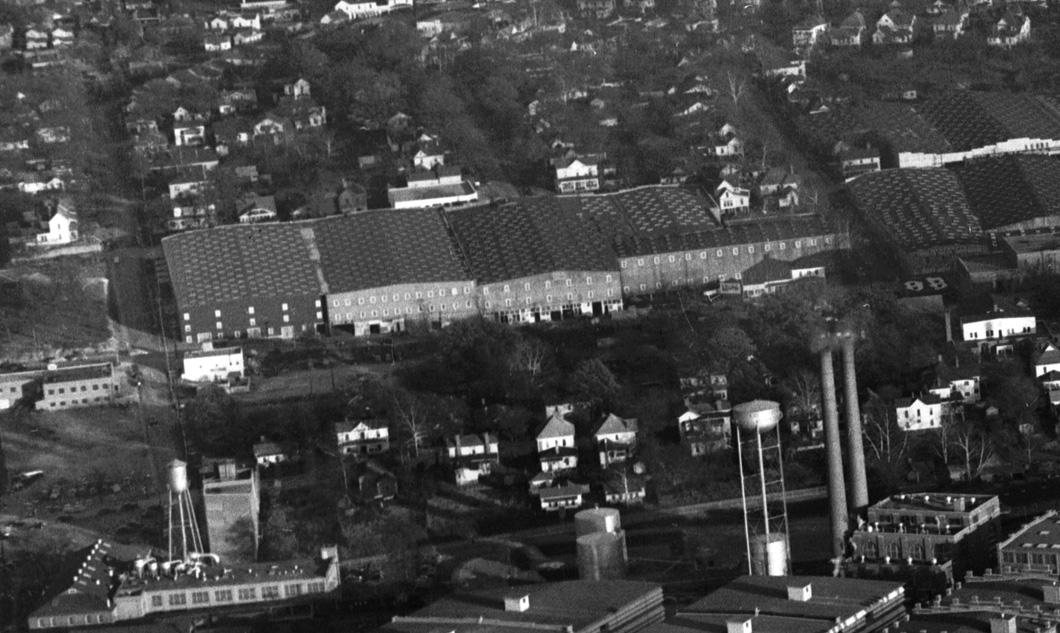
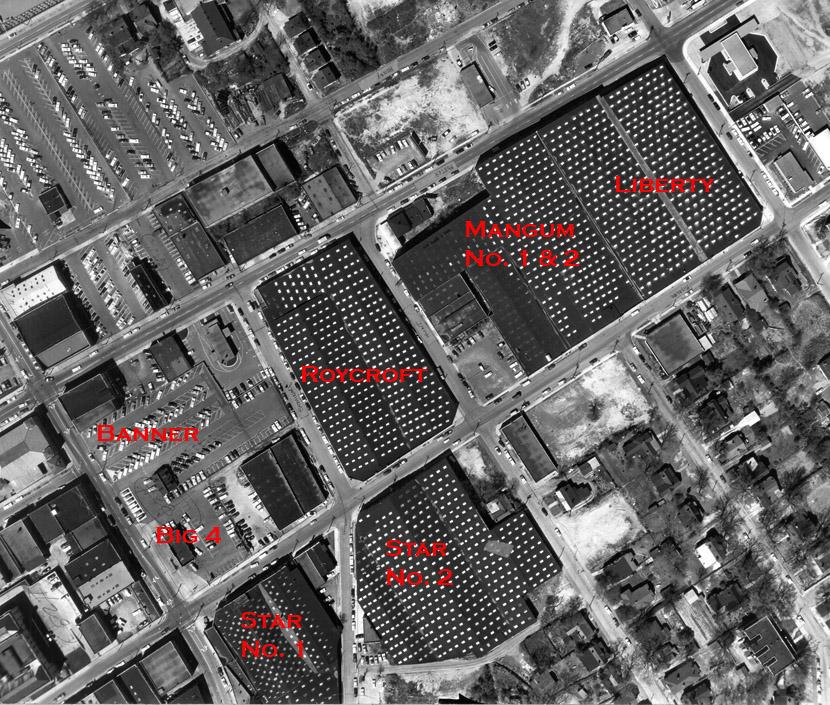
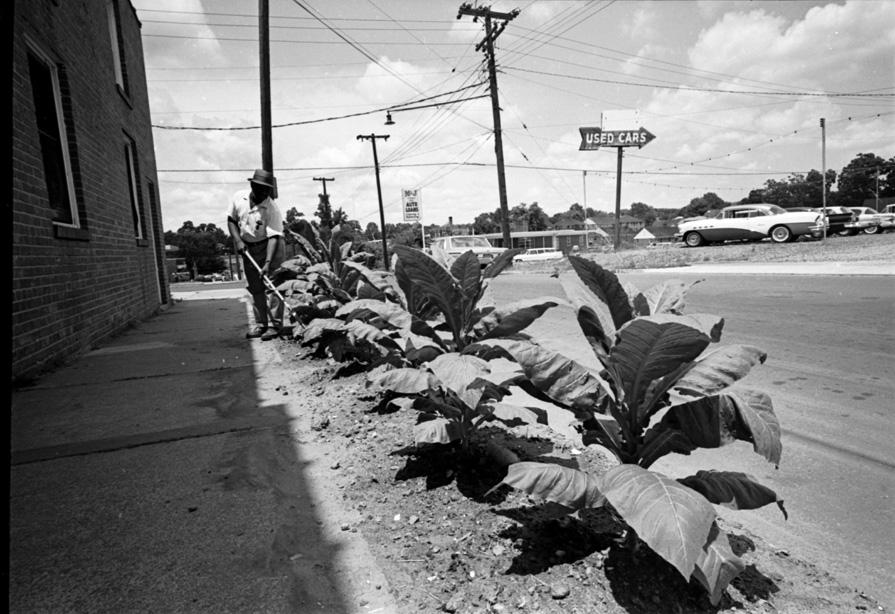
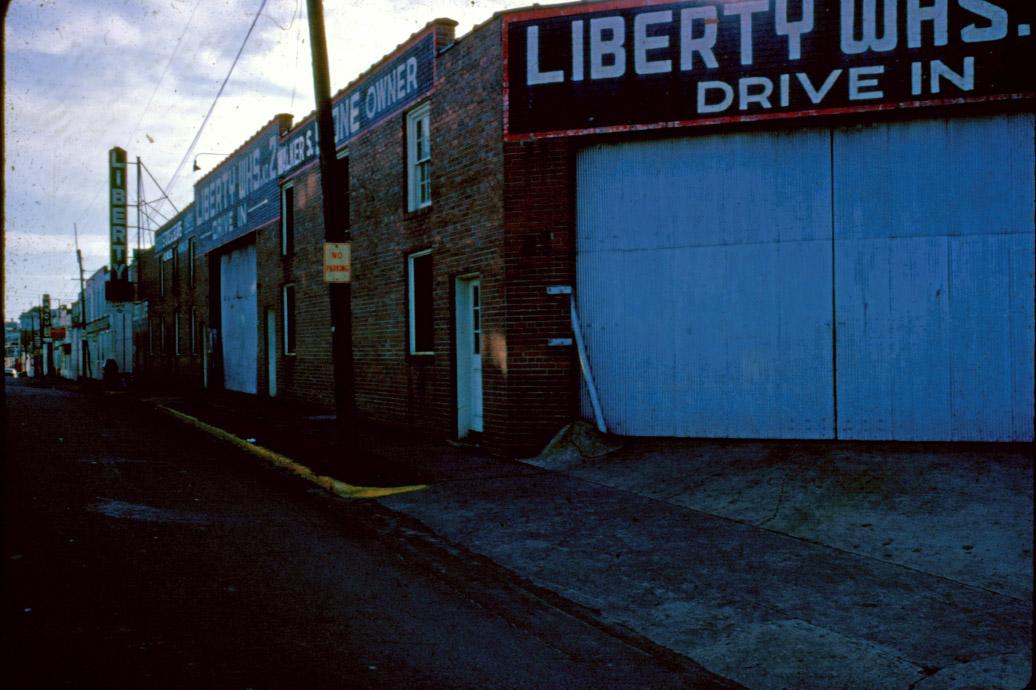
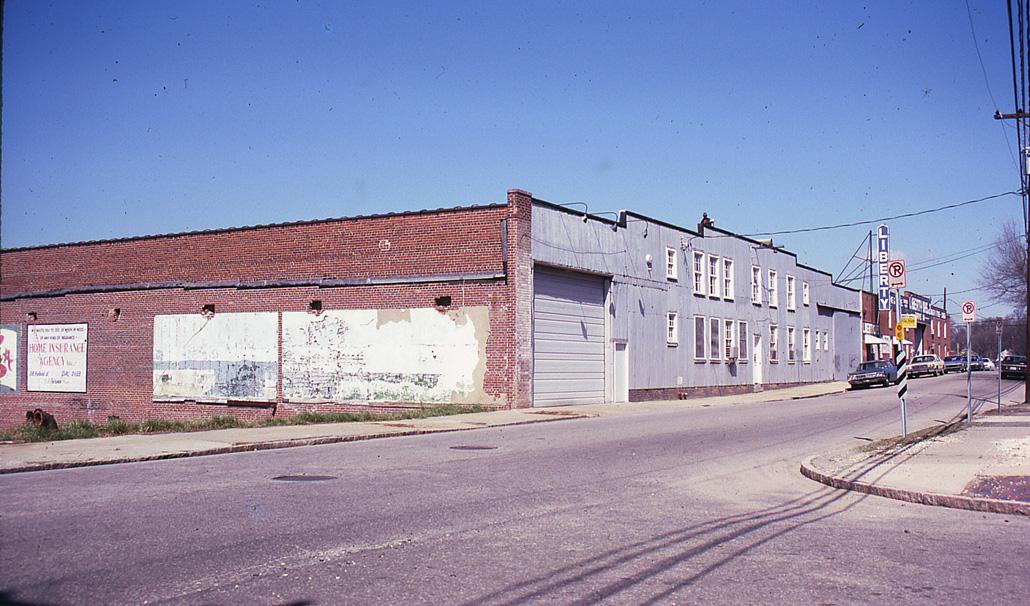
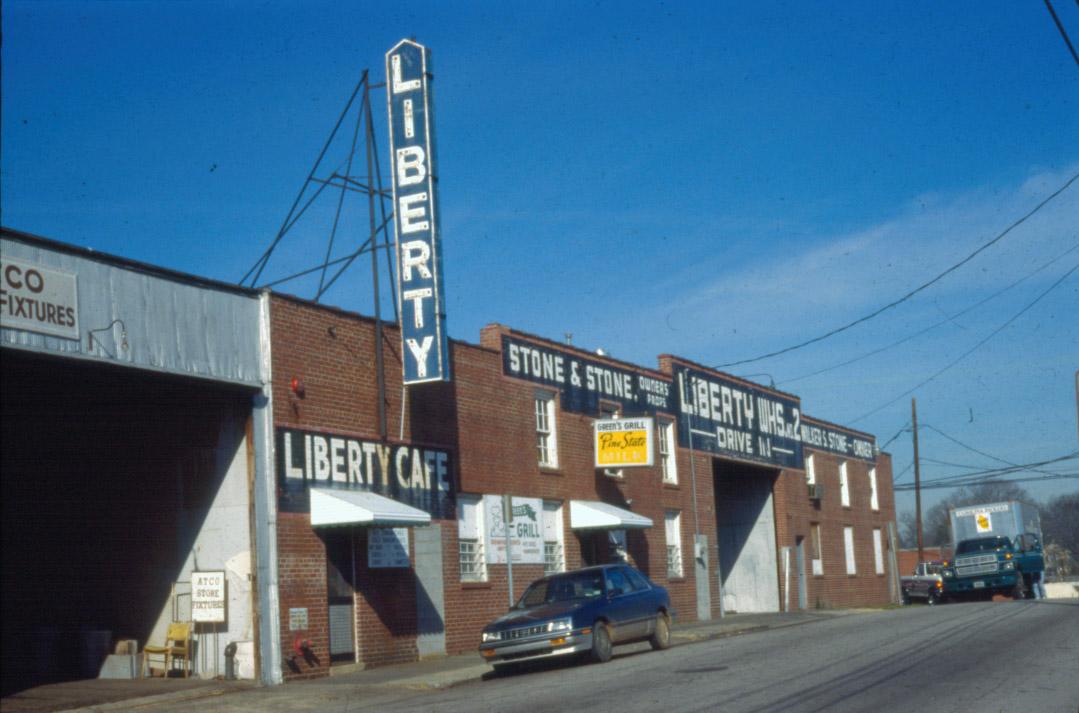
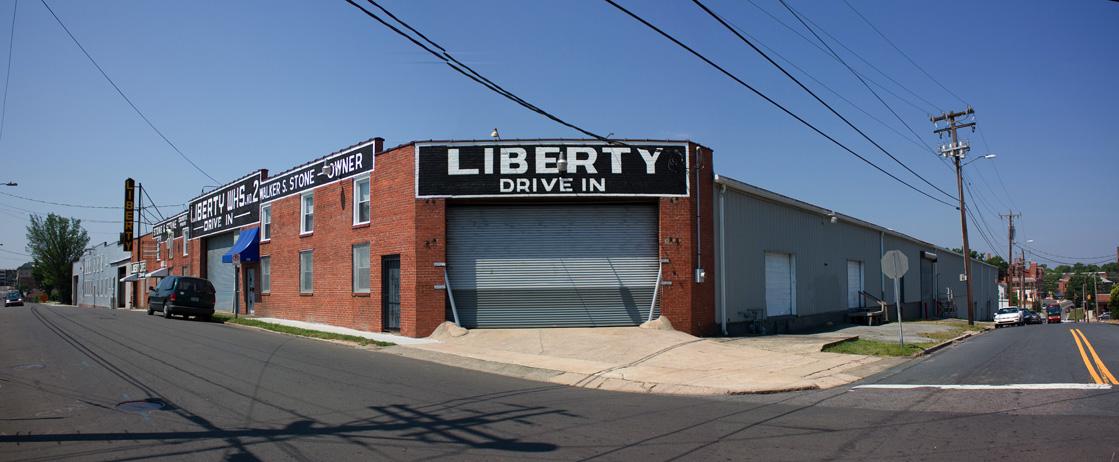
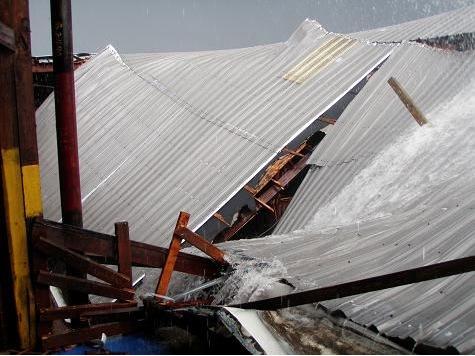
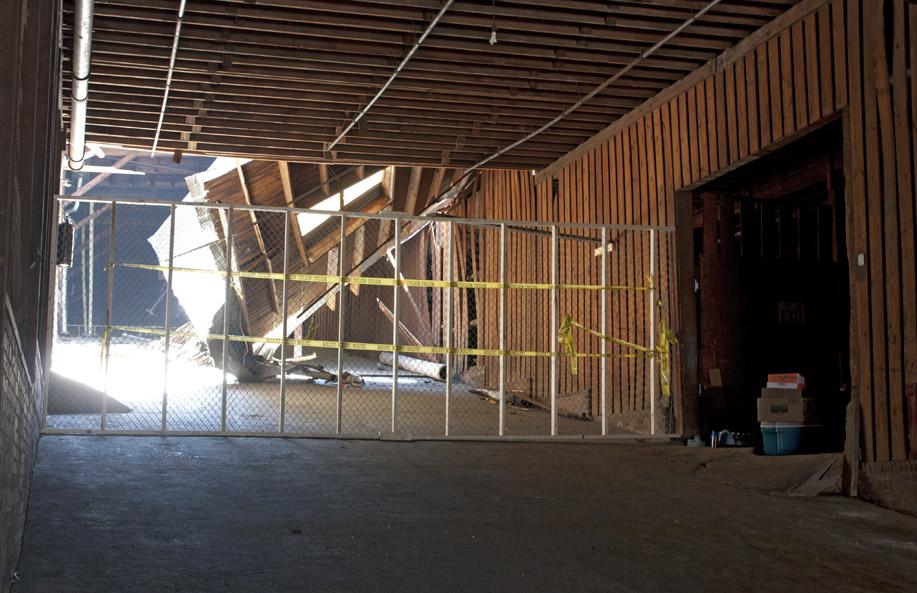
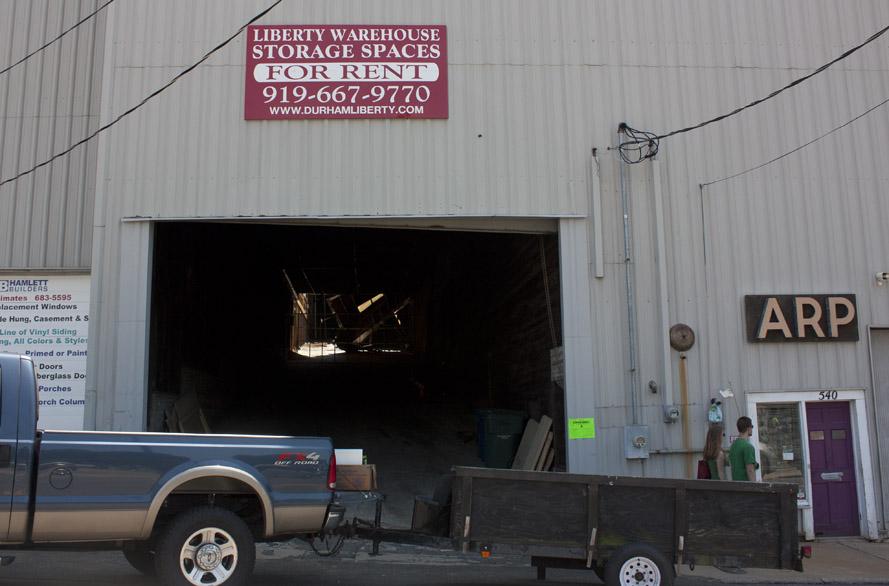
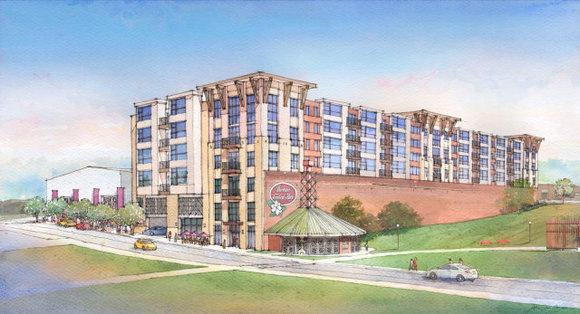
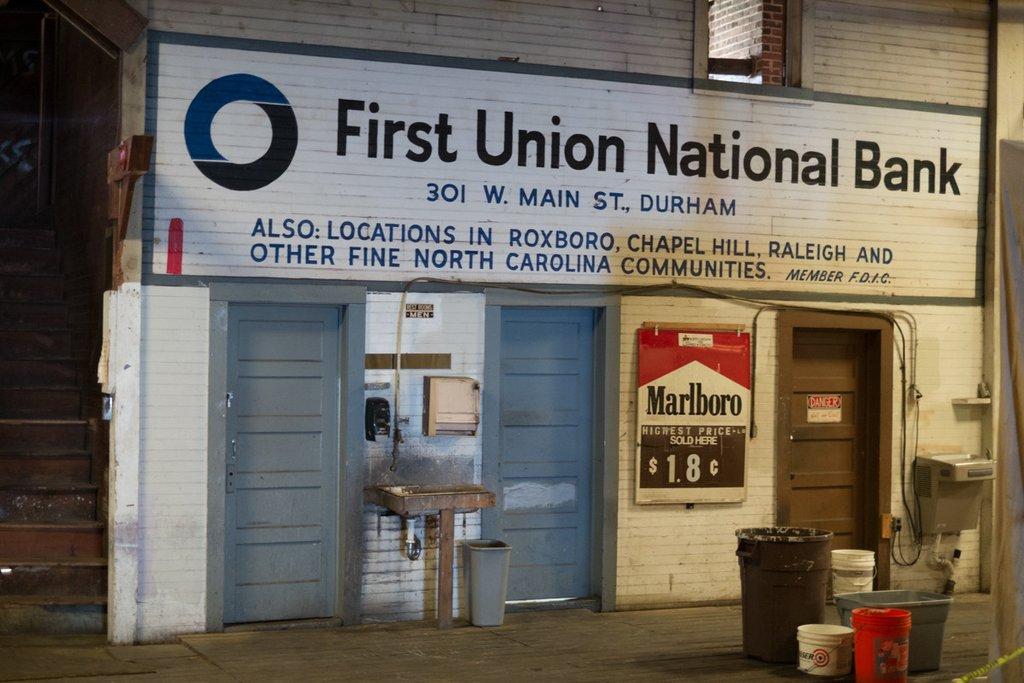
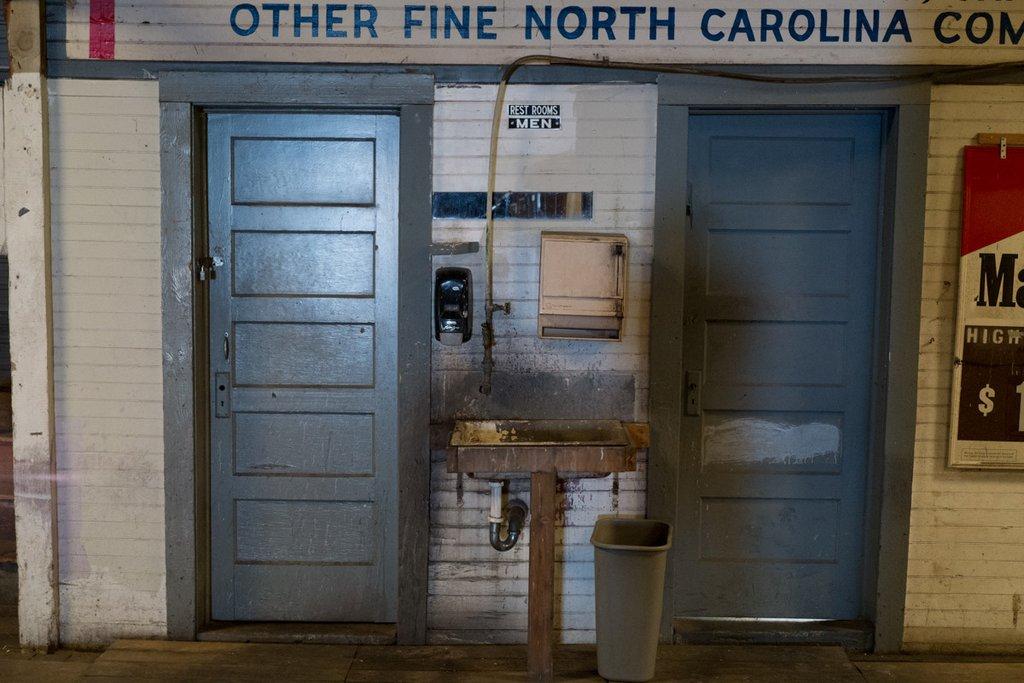
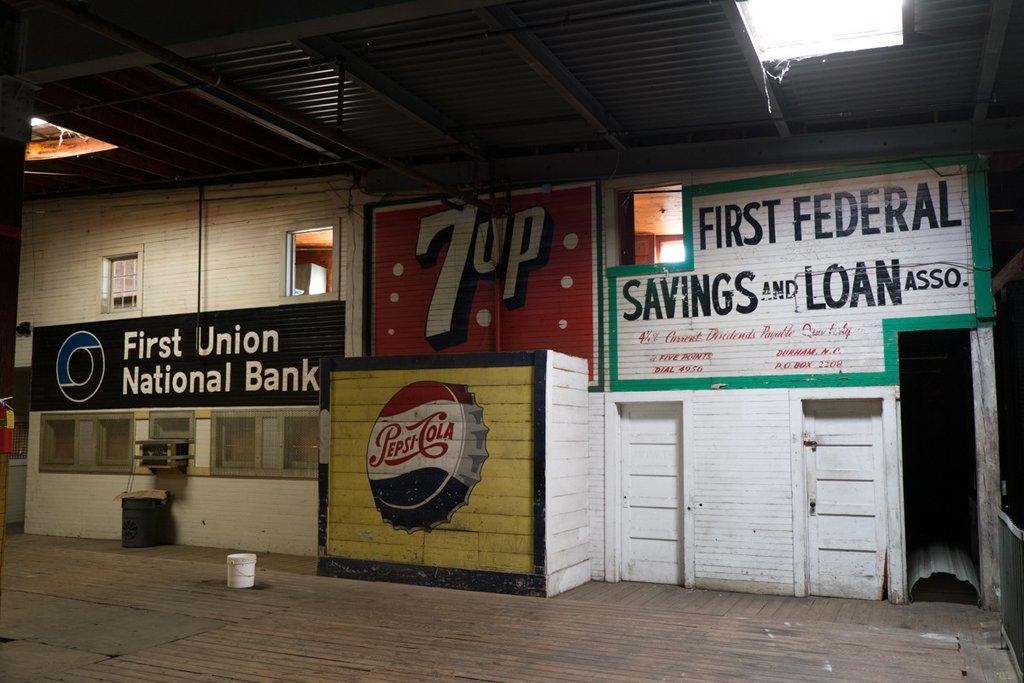
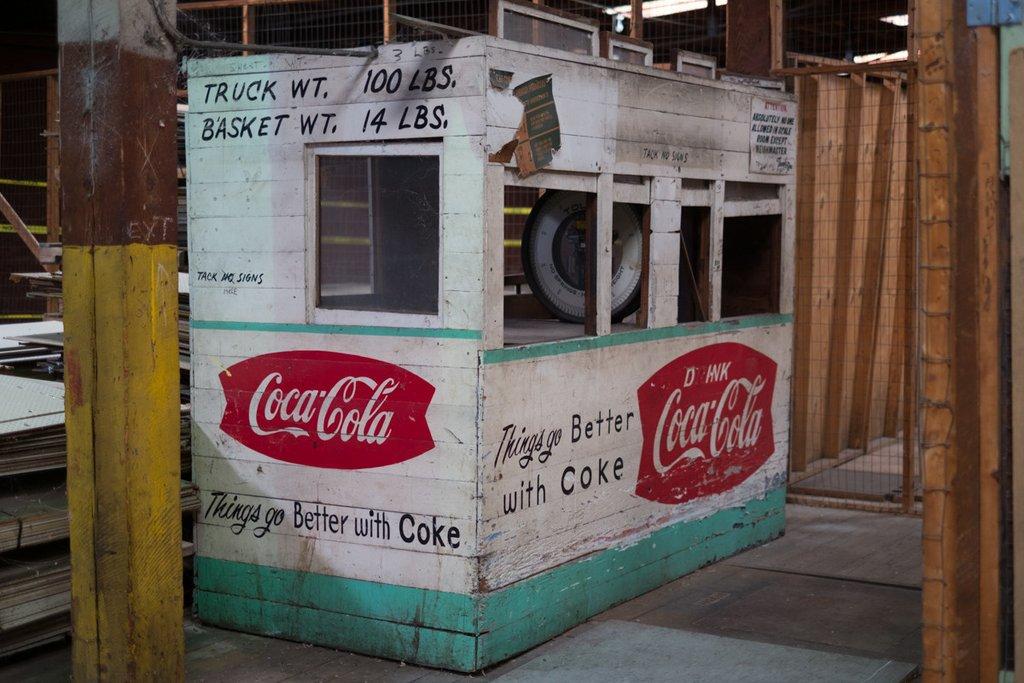
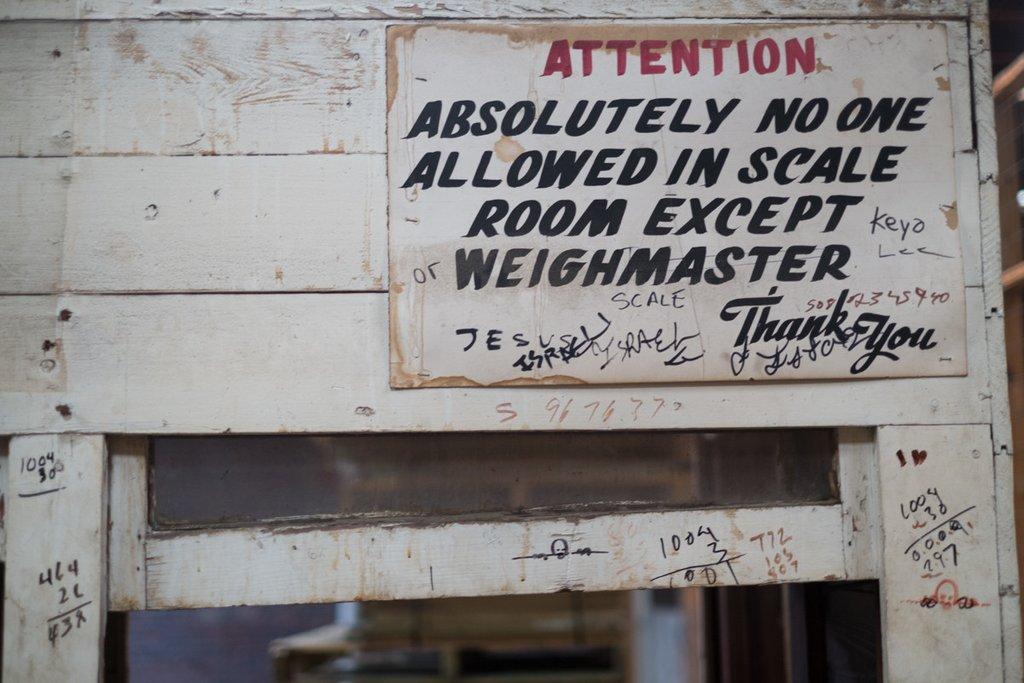
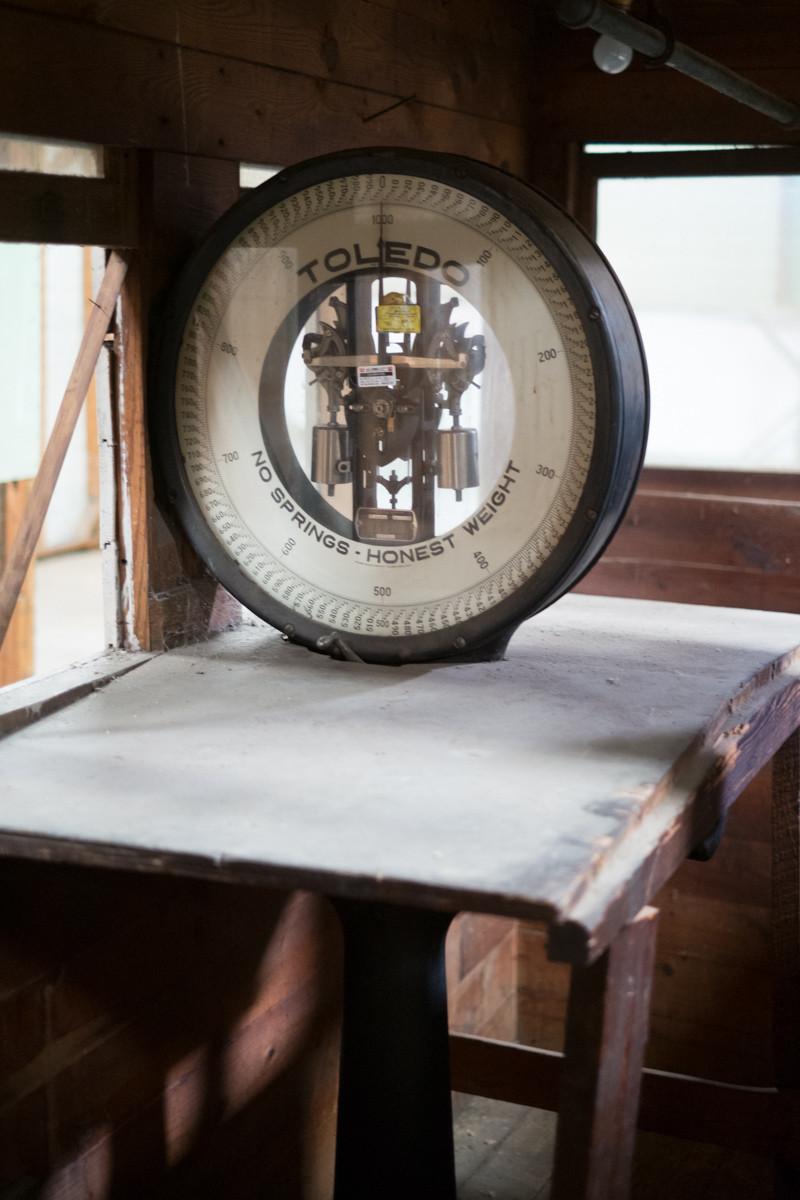
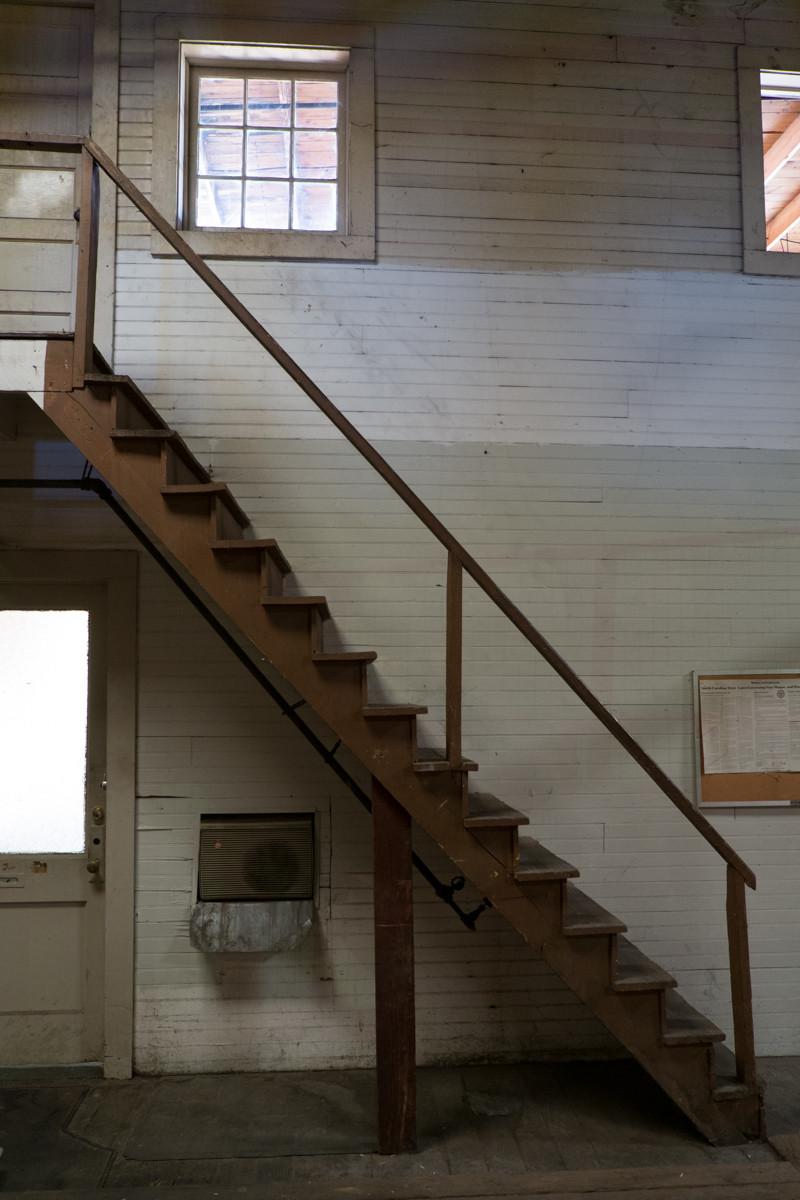
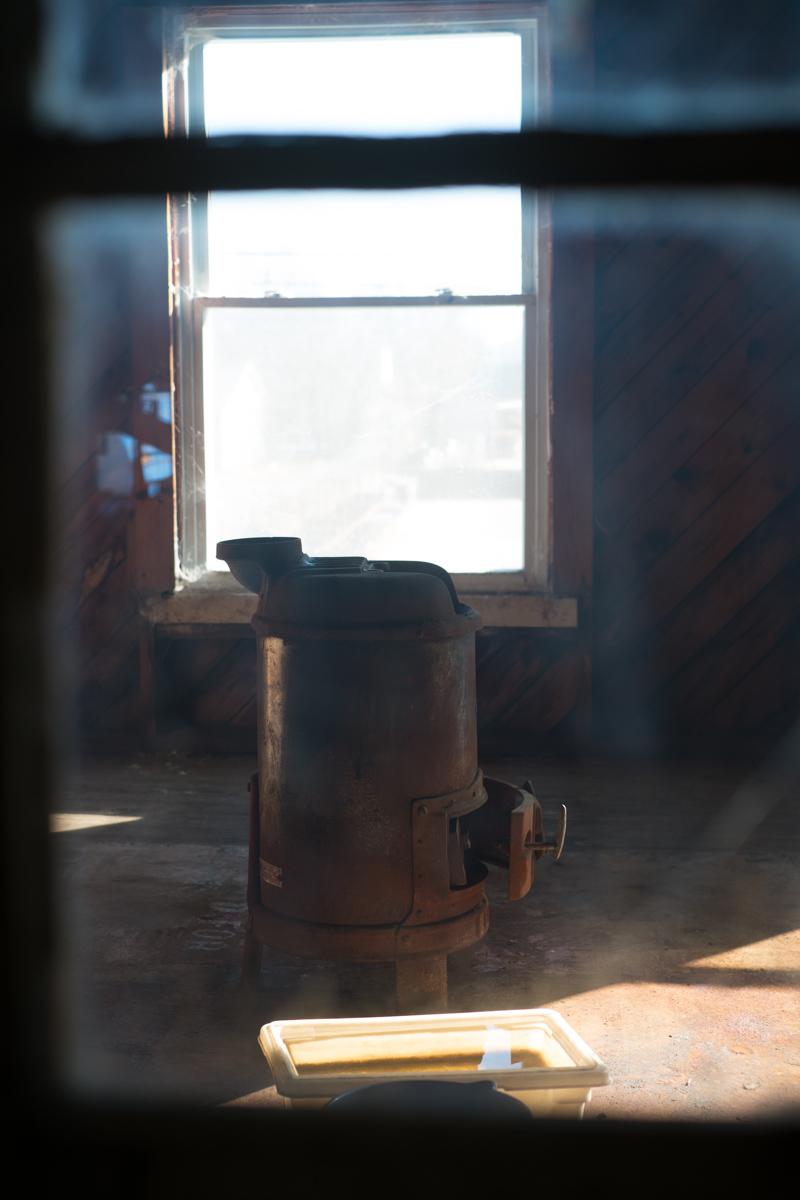
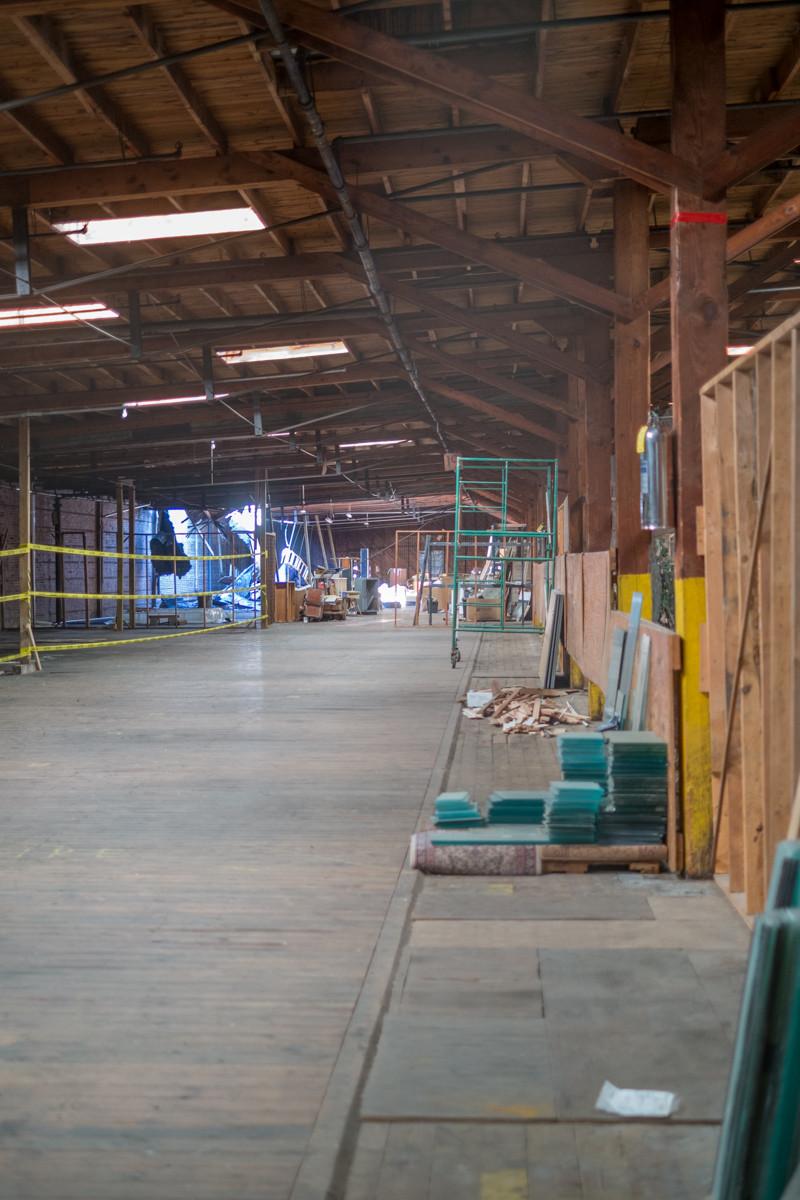
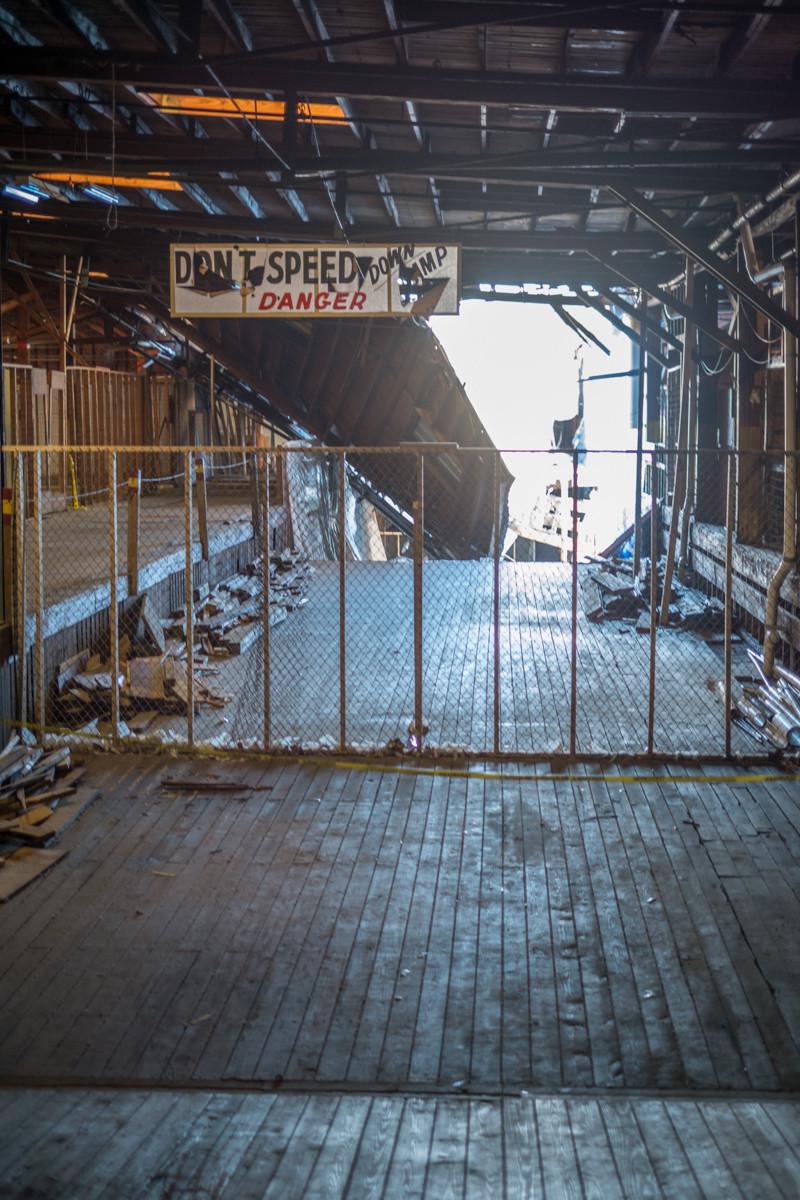
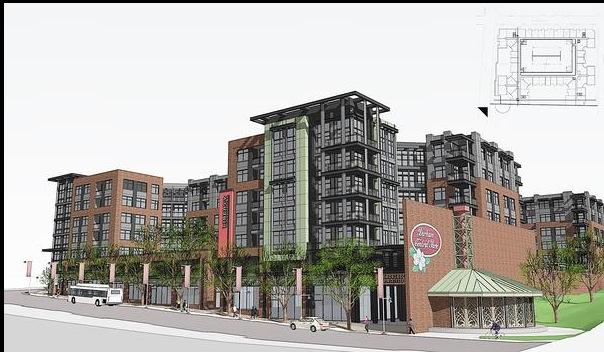
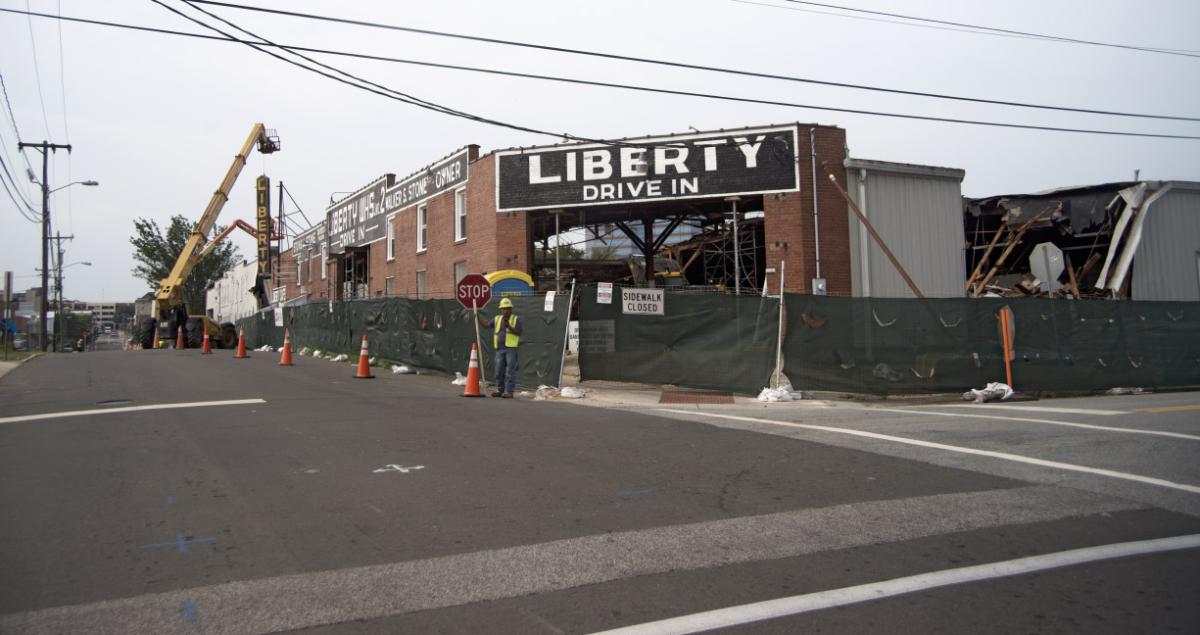
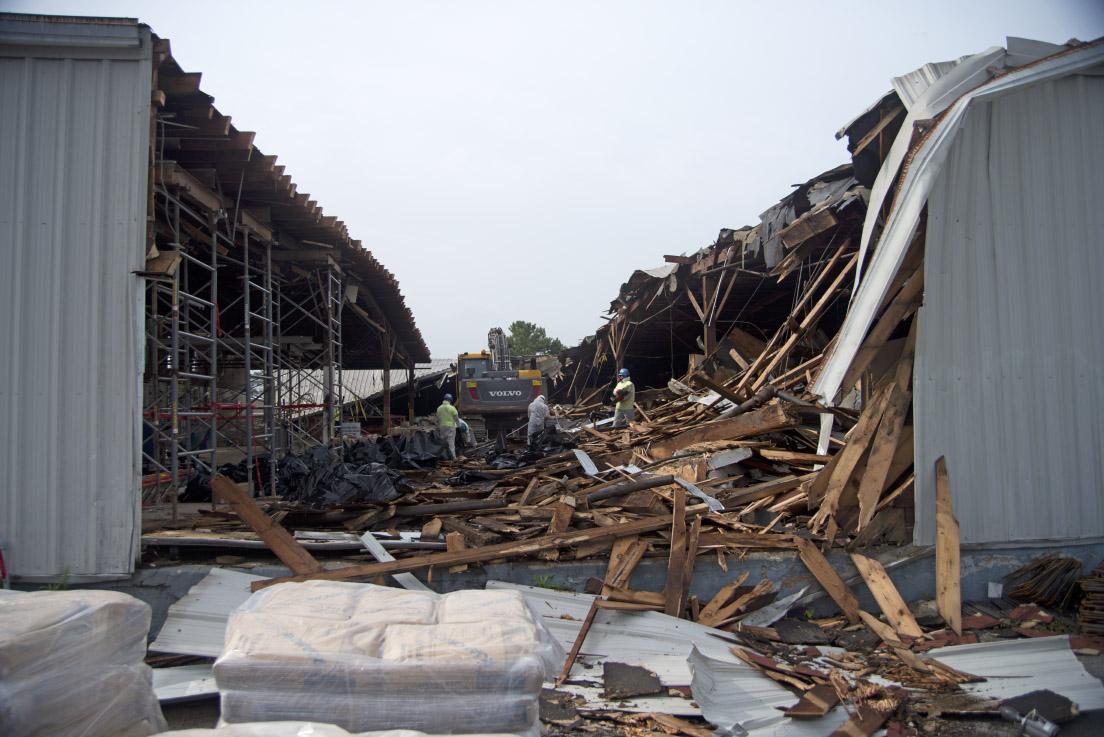
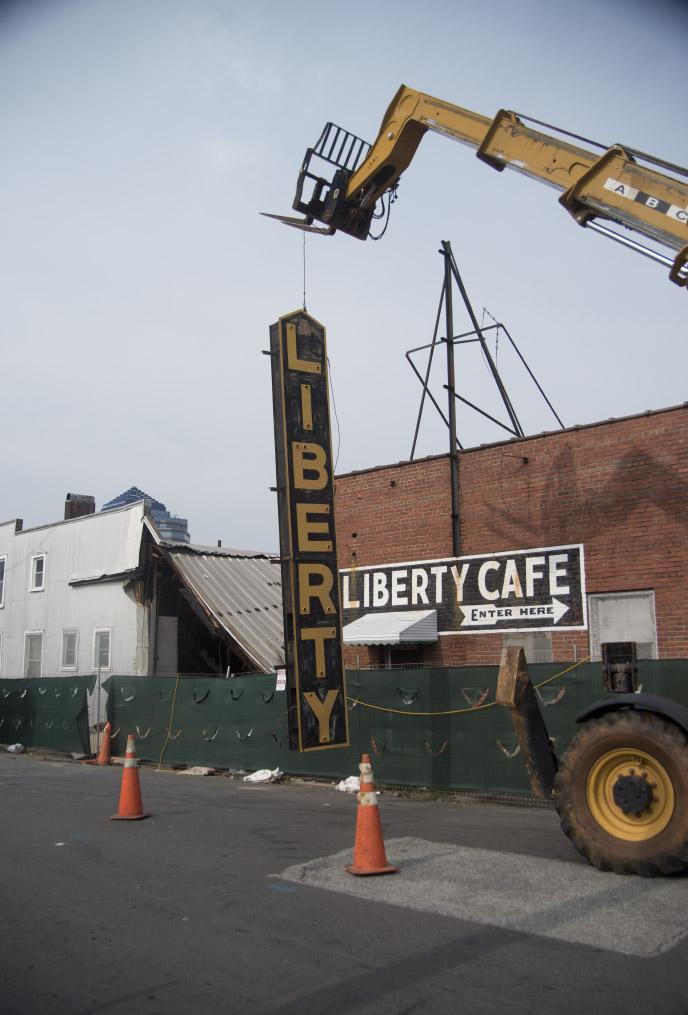
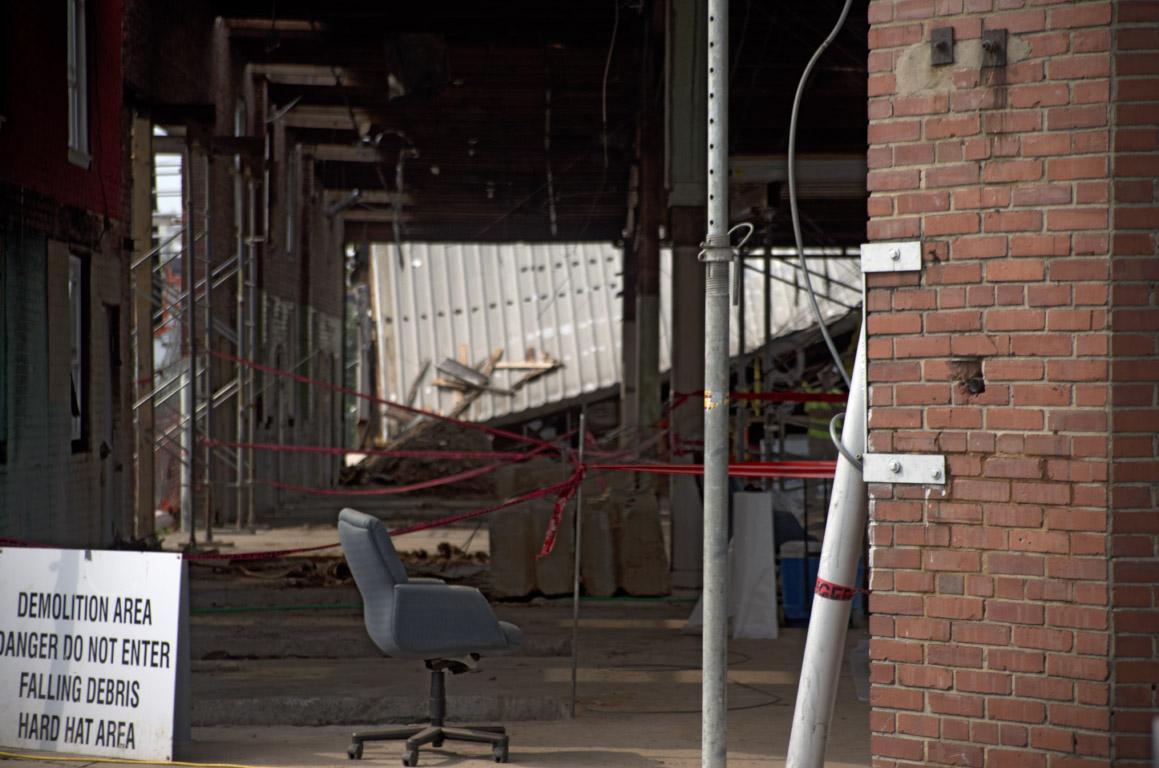
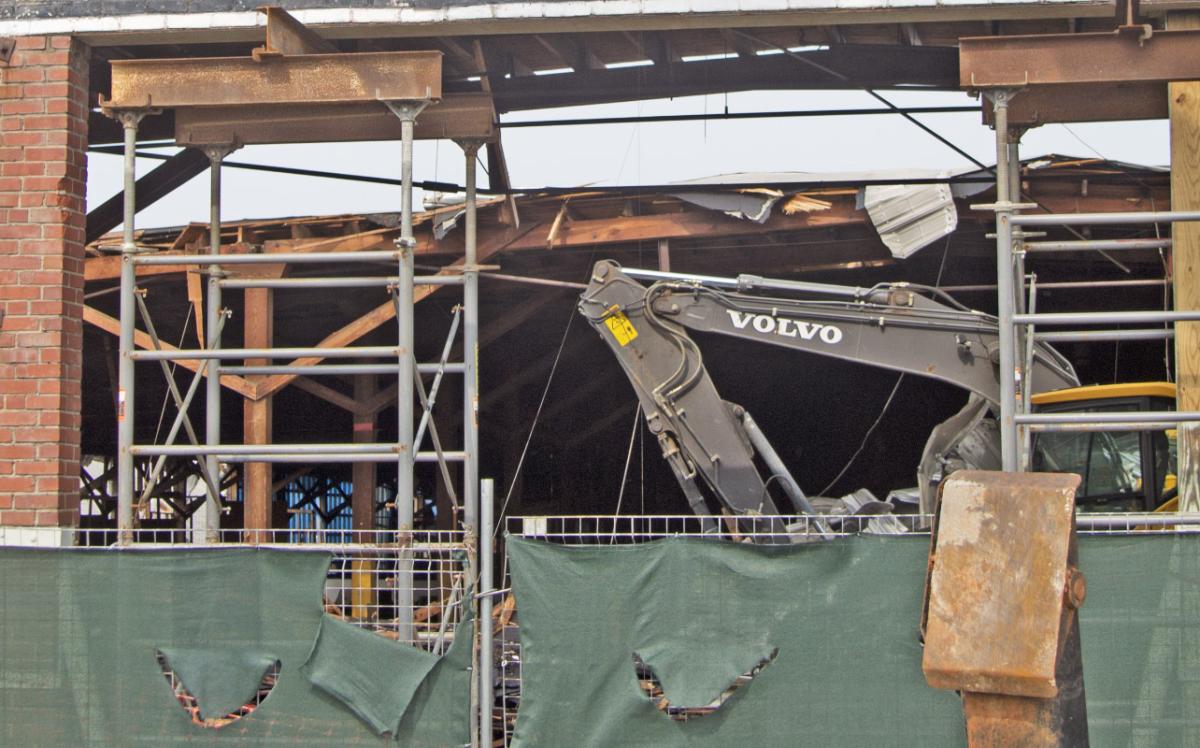
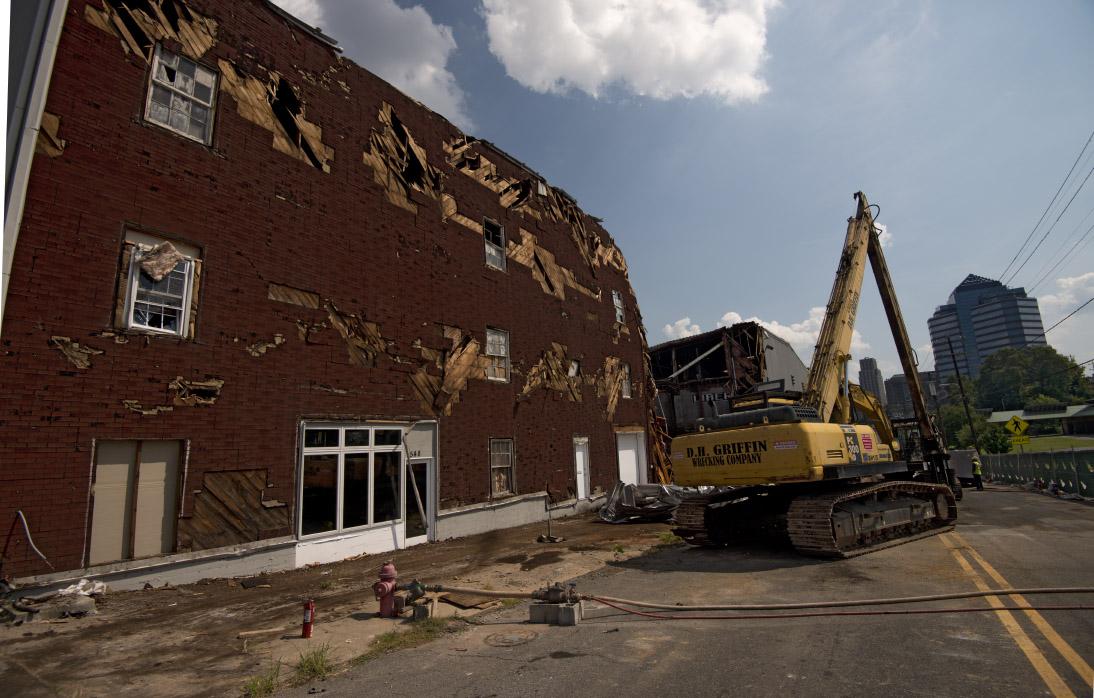
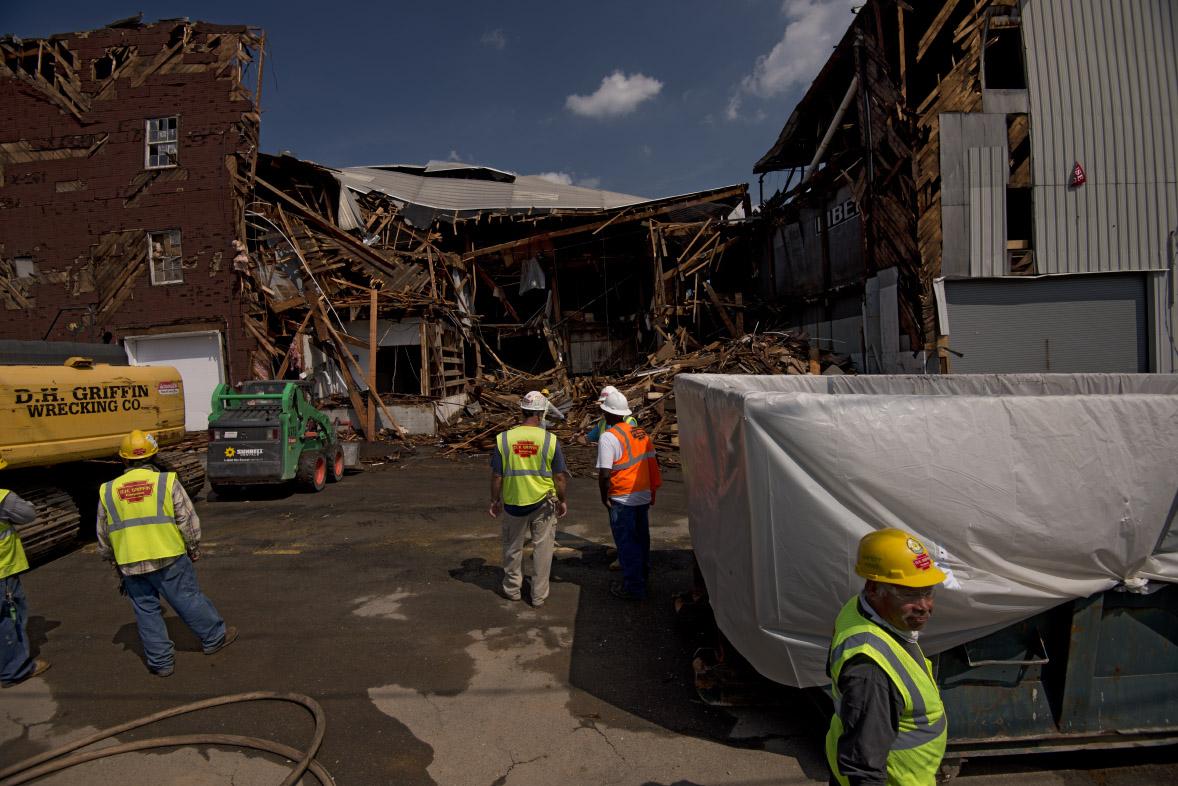
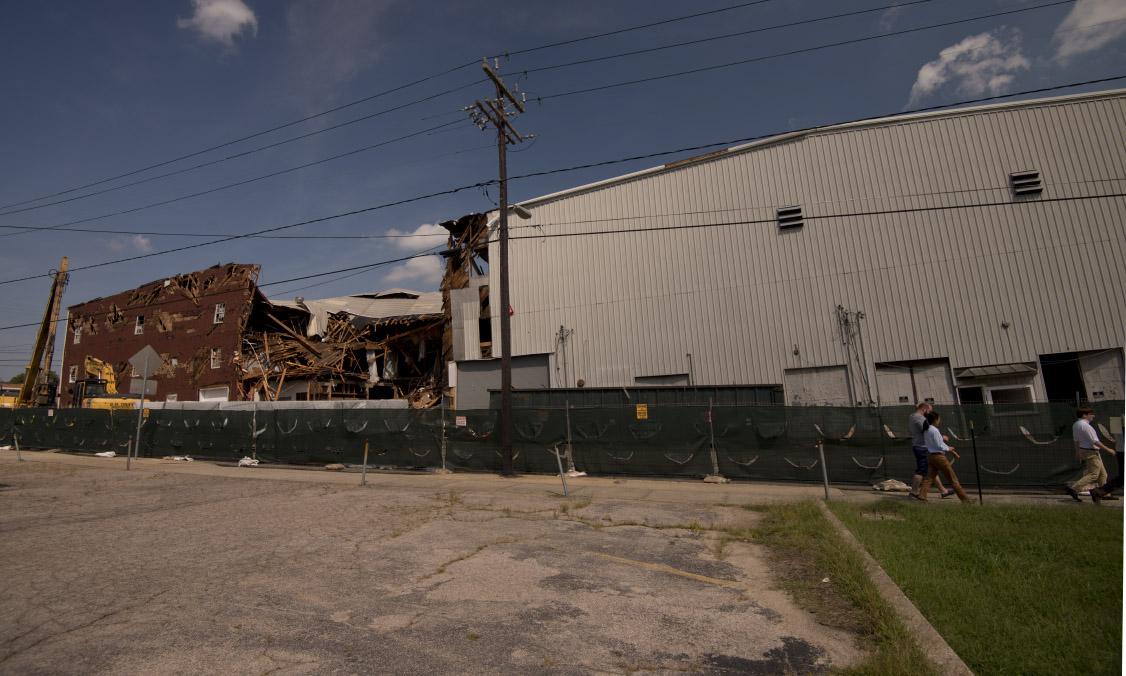
Comments
Submitted by McJoe (not verified) on Fri, 7/11/2008 - 2:35pm
The recent coverage of the tobacco warehouses of Durham has been interesting. Anyone have any idea how a farmer decided which warehouse to take his tobacco to?
Submitted by Andrew Edmonds (not verified) on Fri, 7/11/2008 - 5:23pm
One way of enticing farmers to do business in your warehouse was to provide him amenities not found elsewhere.
According to Jean Anderson's Durham County (p147), EJ Parrish erected "the biggest and best warehouse in the state at that time. It had sheds on both its long sides, which could accomodate one hundred wagons, and a basement for storage and sleeping accomodations for farmers. Its roof, like the others, was riddled with skylights to allow buyers to judge leaf color accurately in natural light." Gary profiled the site of this warehouse in 2007.
Walker Stone, former owner of the Liberty Warehouse, was quoted in 2002 by Perry Pike and Barbara Lau (two who helped hone the Preservation Durham Tobacco Heritage walking tour script):
“You just had to go out and talk to [the farmers] individually, one at a time, and convince them that you were the best there ever was at selling their tobacco and they would bring it. If they had confidence in you they'd stick with you. I had people that just wouldn't sell anywhere else.”
In an interview conducted in 1938 by the Federal Writers' Project (Southern Historical Collection #707), Bill Jordan said, "As a warehouseman one thing you must never do is to let a farmer believe you think he hasn’t got plenty of tobacco sense. Even if he’s wrong you have to let him believe he’s right. And if he has confidence in you and believes you know what you’re doing he’ll do business with you.”
--ASE.
Submitted by J.p. (not verified) on Fri, 7/11/2008 - 6:16pm
So how did the Foster St. side of the warehouse come to be home to the arts groups that are there now? From their web sites the Scrap Exchange moved there in 2000, and Liberty Arts opened in 2001.
Submitted by Michael Bacon (not verified) on Fri, 7/11/2008 - 6:39pm
J.P.,
With the establishment of Durham Central Park, one of the early boards approached Walker Stone with the proposal of leasing that out as art space. According to folks I know who were involved, Stone was highly skeptical that any of this would work, but was willing to go along.
As for Greenfire, in the process of working on Durham Central Market, I contacted them several times about locating in Liberty, given its extensive frontage on the "Great Lawn" Gary profiled yesterday. (The former Mangum Warehouse site) The word I got was that they were at least five years away from doing anything with the building, and given the structural and mechanical work that would need to be done to the building, to make it good for anything other than warehousing or inexpensive studio space, they didn't have any desire to fix up just one small corner of it for us.
As for its future, assuming, as I dearly hope, that it survives into the next round of Durham revitalization, I predict that the second floor (out of three) will get turned into parking. Half of that floor rests on the ground anyway, so reinforcing it for parking wouldn't be too hard.
Submitted by Anonymous (not verified) on Fri, 7/11/2008 - 11:45pm
My guess is that they will preserve part of the building, at a minimum the Rigsbee St. facade, but knock much of the rest of it down. I'd also guess that it would be structurally challenging and/or economically unfeasible to add more floors and go vertical. Pure speculation.
Submitted by Jim McCloud (not verified) on Mon, 6/27/2011 - 2:00am
The TV stations and newspapers may be taking credit for these photos, but I'm the one who took them. And I have more which show the ongoing neglect that Greenfire has shows toward this historic building. I do have to admit that the real estate market has gone into the toilet with the rest of the economy, but this neglect was endangering lives. If I'd been 30 seconds faster taking out the trash I'd have been under it when it came down. Jim Nuss Pumpkin Patch Scene Shop a.k.a. tired old drama queen
Submitted by Chris M. (not verified) on Tue, 9/18/2012 - 11:27am
Given the other likely options in the current state of things (fix the roof & water damage just to leave it vacant, or demolish it completely) I'm okay with Greenfire's proposal. More residential in the Central Park neighborhood is a definite plus, and I do like the fact that the plan preserves the Rigsbee facade, the foundry, and the weathered brick wall along the park lawn. I don't love the rendering of the apartment block itself (I'm seeing a troubling amount of tan, which often means fake stucco), nor the fact that it will loom over the Rigsbee facade if there is not a setback on that side. But even if it's less than perfect architecturally, I think it will be a big net positive for the neighborhood.
Submitted by John Martin on Tue, 1/28/2014 - 11:11am
I'm not on Facebook, so I can't join the discussion there. Phil Azar, however, made an interesting point. He said that Preservation Durham should research the work done by the architectural firm that is designing the building that will sit on the carcass of the Liberty Warehouse. You don't have to wait for PD. Everything you need to know is available on the architect's website: ktgy Architecture + Planning. (I think you can tell a lot about them from the cutesy way they've named themselves: the lower case ktgy, the + sign instead of an "and" or an ampersand.) Anyway you can find their "portfolio" of mixed-use projects from their website:
(I would put a link here, but Open Durham doesn't allow links in comments because of spammers. But it's not hard to find. Google ktgy Architecture + Planning and go to "portfolio" and then "mixed use."
Am I the only one who thinks that all this shit looks basically the same? Of course, some buildings are bigger than others, some are taller, some have different colors, but it's all just the architectural equivalent of elevator music. When I see something like this, trying to make things appear different when they aren't, I'm reminded of the time, decades ago, when I went shopping for an electric blanket at Roses. I found two that were made by the same company, and appeared to be identical in terms of size, wattage, etc. One, however, was priced $10 higher. A saleslady happened to come by, and I asked her what the difference was. Without missing a beat, she pointed to the higher priced one and said, "it's more dee-lux."
So, yeah, we're getting something different from what "ktgy Architecture + Planning" designed for Denver or Shady Grove. Ours is more dee-lux. Or maybe less, it's hard to tell. . .
Submitted by PeterK on Fri, 5/30/2014 - 8:18am
Sold April 2014 for a whopping $3,500,000. Just a drop in the bucket for whats to come.
Submitted by raven on Mon, 7/21/2014 - 10:03pm
Clansy and Thays is working on Liberty Now they have took down a oak tree
Submitted by WB (not verified) on Thu, 8/7/2014 - 12:46pm
Circle at Ninth, 15th street, Swift Avenue, 605 Chapel Hill, Williford Street, Solice at Ninth, West Villiage, Church and Main, Liberty Whse. possibly Greystone- All within a few blocks of each other (I feel like I'm leaving at least one out) WHEW!!!!!! I don't think one new Harris Teeter is gonna cut it!!
Submitted by raven on Sun, 8/17/2014 - 11:18pm
there is a liberty warehouse tobacco in henderson nc that could been run by mr stone's family on nc 39 mr gary
Submitted by raven on Thu, 8/28/2014 - 7:51pm
dh grfffen/clansy and theys doing the work on liberty warehouse why would did they hid brick back for.
Submitted by Kim Wrenn (not verified) on Fri, 8/29/2014 - 12:17pm
I went by the Reuse Warehouse on Geer Street a few weeks ago and saw the Liberty Warehouse sign, the 2 scale houses and scales and the steep staircase (all pictured above). They are apparently being stored there for use in the future development of the site. Everything is inside except the sign, which is a concern. I took pictures for posterity. I just thought it was important that someone know where these items are in case the developer does not actually use them.
Submitted by Peter Katz (not verified) on Sat, 8/30/2014 - 2:44pm
Thought I'd mention that some of the questions asked in the comments above regarding tobacco sales and the other Liberty Warehouse were actually asked of Walker Stone at a Durham County Library presentation in July. You can watch it by going to the youtube link on their website under:
durhamcountylibrary.org/humanitiesvideos/
There was also a short clip from the documentary that is being made about the Liberty Warehouse.
Submitted by kwix on Tue, 1/30/2018 - 8:32am
I just discovered this archive, and want to make sure that others are aware too. It has many pictures of Durham 1935-1945, including life inside and outside the tobacco warehouses, patent medicine salesmen, farmers selling turkeys, Duke-Carolina games, local shops and businesses and many other scenes of everyday life. Photogrammar (a collection of photos created by the Farm Security Administration and the Office of War Information).

Add new comment
Log in or register to post comments.